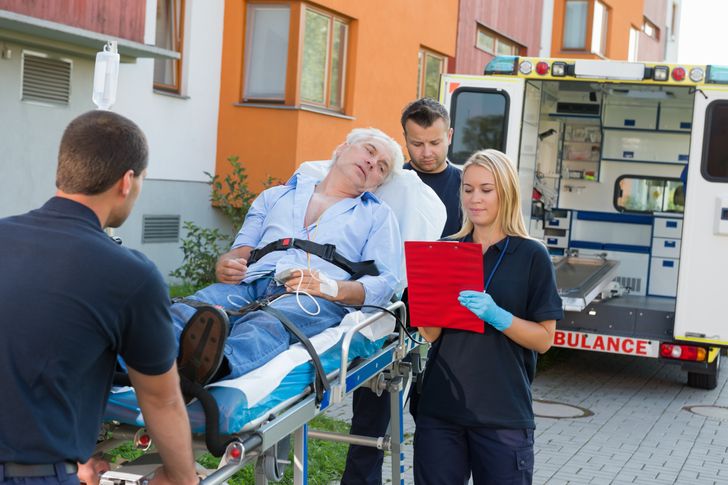According to the World Health Organization, stroke ranks third on the list of deadliest diseases and disorders. Unfortunately, most strokes are not even noticed until it is too late. We want to show you how to recognize a stroke and how to prevent it from taking your life.
Doctors identify two types of stroke: a hemorrhagic stroke and an ischemic stroke caused by a blocked vessel. An ischemic stroke may not have distinctive symptoms and can easily go unnoticed.
According to statistics, 80% of strokes are ischemic. 37% of these stroke patients die, 31% of stroke patients need constant care, and 20% are unable to walk on their own afterward.
What Happens During A Stroke?

The most common reason for an ischemic stroke is a clot or spasm that blocks blood flow to a certain part of the brain. The tissue around the clotted vessel swells and space in the skull is limited. Intracranial pressure rises and a headache appears.
The whole brain suffers from high pressure. During a stroke, the arms and legs may stop moving, the person may lose motor coordination or the ability to hear or speak. In some cases, hallucinations are even possible.
After a while, the blood flows into the surrounding arteries and veins and the swelling goes away along with the headache. However, it takes a long time for the nervous system to recover. Some of its functions may disappear completely.
In very mild stroke cases, memories of yesterday or events that occurred 10 years ago disappear. In more serious situations, the person is incapacitated.
But if the stroke is recognized early enough, chances are good that the damage can be avoided.
Symptoms Of An Ischemic Stroke

- Sudden numbness or weakness in the face, leg, or arm, especially on one side of the body.
- Confusion, inability to speak or understand
- Problems with one or both eyes.
- Difficulty walking, dizziness, loss of coordination.
- A severe headache that comes on suddenly for no reason
There may be no difference in symptoms between the 2 types of stroke, but the wrong treatment can kill the patient anyway. That is why it is very important to call a doctor immediately to receive a proper diagnosis.
Other Symptoms That Require You To Visit A Doctor:

- A headache that causes vomiting or loss of direction.
- Tension of the muscles in the back of the head
- Vomiting
- darkening of the eyes
- Looking at one spot for a long time for no reason
These signs can indicate a stroke or other health problems.
What You Should Do If You Suspect Someone Is Having An Ischemic Stroke

- Ask the person to smile. Check if one side of the face looks strange.
- Ask the person to raise both arms. Make sure one of the arms is level with the other.
- Ask the person to repeat a simple phrase or poem. Make sure the person pronounces the words clearly and correctly.
If you notice any of these symptoms, take the person to the hospital right away. The only way to reduce the negative consequences of a stroke is to help the person in the first hour.
Even doctors sometimes cannot identify the reason for a stroke right away. If you notice any of these symptoms in family members or even a stranger, call an ambulance and do what the dispatcher tells you before they arrive.
Do you think you can act quickly in a critical situation? Let us know what you think in the comment section below!


